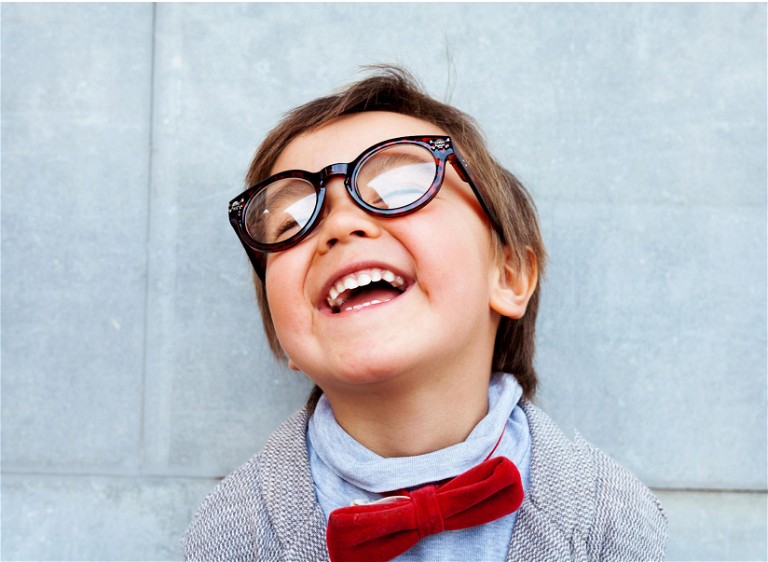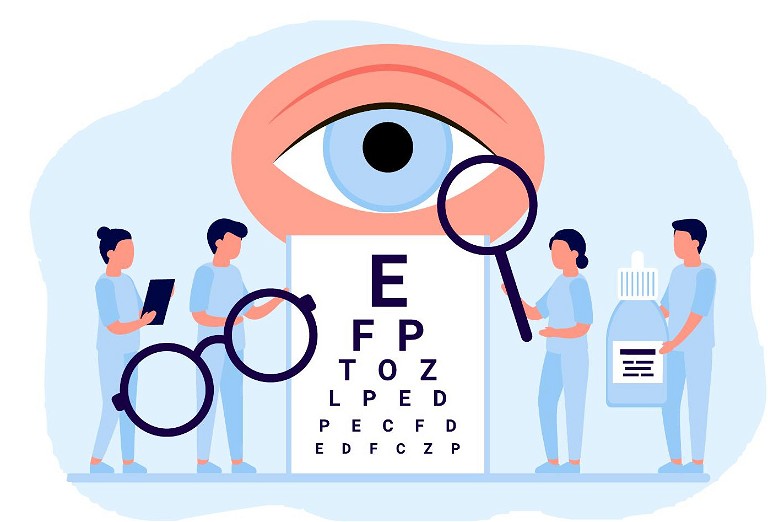mieyewear

Developing the Team
Behind the Child
Paediatric
Dispensing
WRITER Louise Walker
CR Labs
The role of the optical dispenser in paediatric dispensing is crucial, both for the child’s vision and for setting them up for future success and growth.
By taking accurate measurements, ensuring the best lens and frame fit possible, and by making appropriate adjustments, we can be confident in our dispense. If we fail in any of these areas, we can cause more harm to the child.
Dispensing for children is like dispensing for a team. If you view it as such, you can build a rapport with not only the child, but the family too.
It is our job to create a welcoming and open atmosphere that can be engaging and educating, including for the parent or caregiver. It is through communicating and educating parents – allowing them to become aware of certain topics they may not be aware of – that we can help them, so they can fully support the child.
It’s important to know that not many parents are aware their child may need glasses, especially if they don’t wear specs themselves. This means bringing a child into an optometrist and realising the extent of their child’s refractive error can sometimes be emotional. Often guilt surfaces for parents as they were unaware that their child couldn’t see as clearly as they had assumed.
It’s a new journey for all and without the correct help it can have a massive impact on the child’s comfort, facial growth, and vision at a crucial time of their life for their development and education.
Overall, there’s no better feeling as a dispenser than watching a young child put on their first pair of glasses and staring at their parent’s face. It doesn’t happen all the time, but when it does, it is magic.
TIMELY ADVICE
Although the optometrist does discuss the prescription and what it will be used for, as an optical dispenser, part of the duty of care is to give our customers the best possible advice. We may need to reinforce the messages of the optometrist, remembering this experience is often new to the family in front of us. You will need to convey what the correction is for, the testing distance, and any important communication that should accompany the refractive error. This will allow a smoother adjustment for the child, especially if they have high ametropia. This requirement can be challenging if the prescription is outsourced.
Parents need to be aware that it is incredibly important for some conditions, such as amblyopia, to be acted upon in a timely manner as there is a limited window to get the child to use the eye that’s beginning to lose function before irreversible functional loss or damage occurs.

ADVISING ON FRAME SELECTION
Although considerations for high ametropia and frame style are the same for children and adults in terms of determining where the thickness lies, it’s important to understand the face structure and additional needs of a child.
Generally, children are very active; having a poor fitting frame for these young children can affect their vision and comfort. If their spectacles are slipping constantly, it’s annoying. They’re not looking through their optical centre (OC), and the action of pushing up the frames can cause dirty lenses, again affecting their vision. The discomfort may cause them to dislike wearing glasses.
When it comes to choosing a frame for a baby or child, it’s not merely scaling an adult frame down to a smaller size. A child’s head can be up to one fifth of their body. Also, young children have not yet developed their bridge; it’s not until around six to eight years that the bridge/ nose tends to lift and become higher although this can vary depending on multiple factors, including ethnicity of the child. As a result, most children require a larger splayed bridge or a bridge with a lower crest. If the bridge is too narrow or the nasal design is deep; this can cause red marks, pinching, slipping and even cause damage to sinuses. Sometimes, a metal frame with nose pads can be a great option as it’s more universal in fitting comfortably on a nose and can be adjusted.
Although there are trendy, smart frame styles available, when fitting a child, remember that they tend to spend a lot of their time looking up, so having a lens sitting higher is ideal. This ensures their eyes are aligned with the OC or horizontal centre line (HCL). Otherwise, if the frames are sitting below eyebrow line, they may only be using a quarter of the lens and not looking through the OC, meaning they’re not getting their best vision from their lenses.
“ When it comes to choosing a frame for a baby or child it’s not merely scaling an adult frame down to a smaller size ”
MEASUREMENTS
Children’s faces don’t necessarily develop symmetrically. This makes monocular pupil distance (PDs) incredibly important and always preferred, especially when considering amblyopia or strabismus.
Although it can be hard to measure PDs, especially in a child with special needs, it’s crucial to take these measurements correctly. This ensures the child receives their correct prescription and avoids creating other issues such as inducing prism. If high ametropia or amblyopia is present, the child will more than likely have an outside prescription and pupil distance to accompany this, but it’s best practice to also measure these pupils against what has been provided.
If unable to use a pupilometer, for example with very small children where it is simply not an option, measuring inner canthus on one eye to outer canthus on the other will suffice. Sometimes using a toy to distract the child can be useful in directing them where to look. Getting down to their level will reduce parallax errors.
LENS CHOICES
Trivex or polycarbonate lenses are preferred materials for children as they are highly impact resistant. They are also lighter and more comfortable, depending on the degree of amblyopia in the prescription, especially in comparison to Columbia Resin 39 (CR-39).
Equally important, trivex and polycarbonate lenses have UV protection, which is an important consideration as studies have shown that 50-80% of UV damage occurs before the age of 18.1 This UV damage can be from simply not having protection from any form of glasses but also because a child’s crystalline lens is more transparent, therefore allowing more short wavelengths of light to reach the retina.1 Parents may not consider UV damage to the eyes when discussing glasses, so it is important to arm them with the knowledge so they can make an educated decision.
Photochromic lenses, while reducing the amount of UV hitting the eye, also assist children with light sensitivities, headaches, or glare discomfort. They can also save the cost of sunglasses, and ensure the child doesn’t need to swap glasses throughout the day.
Antireflective coatings are strongly recommended as they allow light to travel through the lens at a faster rate. This significantly reduces surface reflection, optimising clarity for the child as they are not distracted by the surface reflection on the lenses. This can have a significant impact in the early years of school and the child’s level of confidence.
CREATING A SAFE SPACE
While I have focussed on the importance of communicating with parents, it is vital to include the child and give them your attention. Use age-appropriate language, encourage them to share their point of view, and actively listen to them. Get down to their level to maintain eye contact and be mindful of your body language.
Overall, your aim is to create a safe space so that both the child and the parent feel comfortable asking questions. Take your time with the family and explain your reasonings.
Rather than saying ‘I don’t like that frame’, explain why. Demonstrate what a good fit looks like and the consequences of choosing something you know will annoy the child.
Children are often not able to articulate what they feel, or what they see. Although some children may immediately see visual benefit from putting on glasses, many do not. Some may be emotional and overwhelmed. For some, it can take a while for the brain to ‘settle’ so they feel comfortable with their glasses.
Advise parents at the time of the dispense and pick-up that some love their glasses straight away, but others will want to take them off, and their child may become upset. Managing expectations and educating parents in a professional manner is vital to setting the child up for success.
Take the time, when the glasses are collected, to show the child and their parents how to take them on and off, and how to put them down so they can avoid scratches. Let them know that the glasses may need to be adjusted from time to time, particularly if the child has a growth spurt, to ensure they are sitting correctly and providing the child with optimal vision.
It’s incredibly important that the child is comfortable and happy with their glasses as it will promote compliance, which in turn will allow them to flourish in their education, development, and self-esteem.
Parents want to do the right thing by their children; as their child’s optical dispenser, you can really be there to support them in this.
“ Children are often not able to articulate what they feel, or what they see ”
Louise Walker is an optical dispenser, working for the Australasian College of Optical Dispensing (ACOD). She has worked in the optical industry since early 2014, completing her qualifications as an optical dispenser through ACOD, and becoming an in-store trainer and supervisor, before joining the team at ACOD in 2023.
Ms Walker acknowledges the following sources: ‘The Science and Art of Paediatric Dispensing’, a webinar by Fiona E. Anderson; President of International Opticians Association, presented on 4 April 2022; and Wilson, D.A. and Daras, S., Practical Optical Dispensing, 3rd edition, Open Training and Education Network, 2014.
Reference
1. Webinar ‘Effective myopia management’ presented by Ulli Hentschel; National Training and development manager at Hoya. Available at: odamembers.com.au/webinar-library [last accessed 29 Nov 2023].